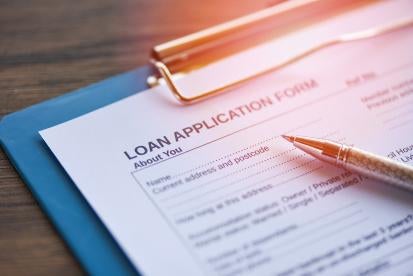On April 2, 2020 the SBA issued an interim final rule regarding the Paycheck Protection Program (PPP) that contains material changes and additional guidance that borrowers must be aware of in order to properly apply for the PPP. Consistent with this rule, the SBA also released the final application for the PPP.
As detailed in the relevant excerpts of the interim rules provided below, notable components of this new guidance relate to:
-
calculating a loan amount
-
clarifying what can and cannot be included in payroll costs (independent contractors cannot)
-
stating the interest rate at 1 percent
-
clarifying that at least 75 percent of the loan amount, forgiveness amount and use of proceeds must be attributable to payroll
These rules apply to all applications filed for the PPP, and it is critical for borrowers to review their applications, including those that may already be filed with their lender, to ensure compliance with this important new guidance.
Excerpts From 13 CFR Part 120
Business Loan Program Temporary Changes; Paycheck Protection Program
How do I calculate the maximum amount I can borrow?
The following methodology, which is one of the methodologies contained in the act, will be most useful for many applicants.
Step 1: Aggregate payroll costs (defined in detail below) from the last 12 months for employees whose principal place of residence is the United States.
Step 2: Subtract any compensation paid to an employee in excess of an annual salary of $100,000 and/or any amounts paid to an independent contractor or sole proprietor in excess of $100,000 per year.
Step 3: Calculate average monthly payroll costs (divide the amount from Step 2 by 12).
Step 4: Multiply the average monthly payroll costs from Step 3 by 2.5.
Step 5: Add the outstanding amount of an Economic Injury Disaster Loan (EIDL) made between January 31, 2020 and April 3, 2020, less the amount of any advance under an EIDL COVID-19 loan (because it does not have to be repaid).
The examples below illustrate this methodology.
Example 1 – No employees make more than $100,000
Annual payroll: $120,000
Average monthly payroll: $10,000
Multiply by 2.5 = $25,000
Maximum loan amount is $25,000
Example 2 – Some employees make more than $100,000
Annual payroll: $1,500,000
Subtract compensation amounts in excess of an annual salary of $100,000: $1,200,000
Average monthly qualifying payroll: $100,000
Multiply by 2.5 = $250,000
Maximum loan amount is $250,000
Example 3 – No employees make more than $100,000, outstanding EIDL loan of $10,000
Annual payroll: $120,000
Average monthly payroll: $10,000
Multiply by 2.5 = $25,000
Add EIDL loan of $10,000 = $35,000
Maximum loan amount is $35,000
Example 4 – Some employees make more than $100,000, outstanding EIDL loan of $10,000
Annual payroll: $1,500,000
Subtract compensation amounts in excess of an annual salary of $100,000: $1,200,000
Average monthly qualifying payroll: $100,000
Multiply by 2.5 = $250,000
Add EIDL loan of $10,000 = $260,000
Maximum loan amount is $260,000
What qualifies as payroll costs?
Payroll costs consist of compensation to employees (whose principal place of residence is the United States) in the form of salary, wages, commissions or similar compensation; cash tips or the equivalent (based on employer records of past tips or, in the absence of such records, a reasonable, good-faith employer estimate of such tips); payment for vacation, parental, family, medical or sick leave; allowance for separation or dismissal; payment for the provision of employee benefits consisting of group health care coverage, including insurance premiums and retirement; payment of state and local taxes assessed on compensation of employees; and for an independent contractor or sole proprietor, wage, commissions, income or net earnings from self-employment or similar compensation.
Is there anything that is expressly excluded from the definition of payroll costs?
Yes. The act expressly excludes the following:
-
Any compensation of an employee whose principal place of residence is outside of the United States;
-
The compensation of an individual employee in excess of an annual salary of $100,000, prorated as necessary;
-
Federal employment taxes imposed or withheld between February 15, 2020 and June 30, 2020, including the employee’s and employer’s share of FICA (Federal Insurance Contributions Act), Railroad Retirement Act taxes and income taxes required to be withheld from employees; and
-
Qualified sick and family leave wages for which a credit is allowed under sections 7001 and 7003 of the Families First Coronavirus Response Act (Public Law 116–127).
Do independent contractors count as employees for purposes of PPP loan calculations?
No. Independent contractors have the ability to apply for a PPP loan on their own, so they do not count for purposes of a borrower’s PPP loan calculation.
What is the interest rate on a PPP loan?
The interest rate will be 100 basis points or one percent.
What will be the maturity date on a PPP loan?
The maturity is two years.
Can I apply for more than one PPP loan?
No.
Can I use e-signatures or e-consents if a borrower has multiple owners?
Yes. E-signature or e-consents can be used regardless of the number of owners.
Is the PPP first-come, first-served?
Yes.
When will I have to begin paying principal and interest on my PPP loan?
You will not have to make any payments for six months following the date of disbursement of the loan.
Can my PPP loan be forgiven in whole or in part?
Yes. The amount of loan forgiveness can be up to the full principal amount of the loan and any accrued interest. The actual amount of loan forgiveness will depend, in part, on the total amount of payroll costs, payments of interest on mortgage obligations incurred before February 15, 2020; rent payments on leases dated before February 15, 2020; and utility payments under service agreements dated before February 15, 2020 over the eight-week period following the date of the loan. However, not more than 25 percent of the loan forgiveness amount may be attributable to non-payroll costs.
Do independent contractors count as employees for purposes of PPP loan forgiveness?
No. Independent contractors have the ability to apply for a PPP loan on their own, so they do not count for purposes of a borrower’s PPP loan forgiveness.
How can PPP loans be used?
The proceeds of a PPP loan are to be used for:
-
payroll costs (as defined above);
-
costs related to the continuation of group health care benefits during periods of paid sick, medical or family leave, and insurance premiums;
-
mortgage interest payments (but not mortgage prepayments or principal payments);
-
rent payments;
-
utility payments;
-
interest payments on any other debt obligations that were incurred before February 15, 2020; and/or
-
refinancing a SBA EIDL loan made between January 31, 2020 and April 3, 2020. If you received a SBA EIDL loan from January 31, 2020 through April 3, 2020, you can apply for a PPP loan. If your EIDL loan was not used for payroll costs, it does not affect your eligibility for a PPP loan. If your EIDL loan was used for payroll costs, your PPP loan must be used to refinance your EIDL loan. Proceeds from any advance up to $10,000 on the EIDL loan will be deducted from the loan forgiveness amount on the PPP loan.
However, at least 75 percent of the PPP loan proceeds shall be used for payroll costs. For purposes of determining the percentage of use of proceeds for payroll costs, the amount of any EIDL refinanced will be included. For purposes of loan forgiveness, however, the borrower will have to document the proceeds used for payroll costs in order to determine the amount of forgiveness.
What happens if PPP loan funds are misused?
If you use PPP funds for unauthorized purposes, SBA will direct you to repay those amounts. If you knowingly use the funds for unauthorized purposes, you will be subject to additional liability, such as charges for fraud. If one of your shareholders, members or partners uses PPP funds for unauthorized purposes, SBA will have recourse against the shareholder, member or partner for the unauthorized use.




 i
i

